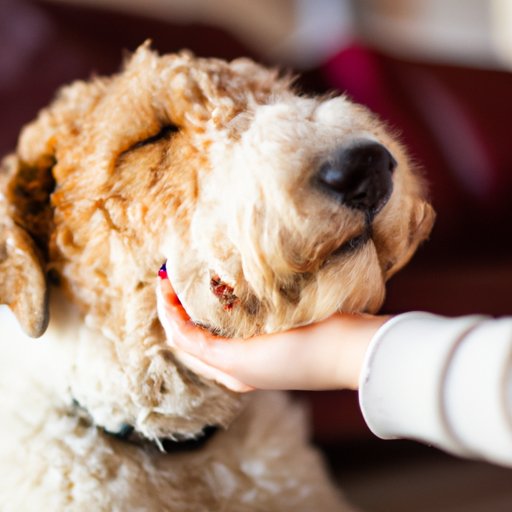
Introduction
Many dogs experience anxiety in varying degrees. Anxiety in dogs is characterized by fear, apprehension, uncertainty or worry-like behavior in response to stimuli, situations or events. Dogs that suffer from anxiety will display symptoms such as restlessness, panting, pacing, trembling or destructive behavior. In this article, we’ll explore various techniques to calm an anxious dog, so you can help your furry friend cope with their anxiety and live a happier life.
Understanding Anxiety in Dogs
The signs of anxiety in dogs can include panting, salivating excessively, shaking, pacing, hiding, and whining or vocalizing more than usual. Some of the most common causes of anxiety in dogs include separation anxiety, fear (phobias), noise aversion, and social anxiety.
Exercise
One of the best ways to reduce anxiety in dogs is through regular exercise. According to pet experts, exercise helps to reduce stress and release endorphins which can help to make your dog feel better. Dogs who have a high energy level may need more than 30 minutes of exercise per day.
Some ways to incorporate exercise into your dog’s routine include regular walks, swimming, and playing fetch. Remember, consistency is important in exercising your dog since it helps dogs simply to regulate their cortisol levels better and combat anxiety.
Consistency
Another crucial factor in reducing anxiety in dogs is consistency in their routine. Dogs thrive on routine and a change in routine can cause anxiety and stress.
To create a consistent routine for your dog, try to feed them at the same time every day, take them for walks at regular times, and try to schedule playtime and other activities during the same times each day. You should also avoid making any significant changes to their routine without some indication, like changing up their walking route slightly each day to provide new smells and sights for them.
Calming Aids
There are a variety of natural and medicinal products that can help reduce anxiety in dogs. Some of the most common types of calming aid products include pheromones, essential oils, and certain medications.
However, when using products to calm your dog, it’s important to keep safety in mind. Always check with your veterinarian before giving any new medications or supplements to your dogs, especially if your dog is already on medication for anxiety or any other condition.
Music Therapy
Music therapy can help to soothe anxious dogs. Research has shown that classical music and soft rock can help to reduce stress and anxiety in dogs. Dogs have keen hearing and also appreciate calm music. So, playing relaxing music for your dog can help a lot in calming them down.
When trying out music therapy, experiment with different types of music to see what works best for your dog. You might also want to leave on instrumental music all day while you’re at work. Spotify has many different playlists made for calming your dogs and in case you don’t find them effective enough, you could always mix and match your own playlists to see what works best.
Touch Therapy
The emotional benefits of physical touch are not only limited to people but also to dogs. Touch therapy can be an effective way to calm anxious dogs. Some techniques you can use are gentle massage, acupuncture or acupressure, or simply petting your dog.
To provide touch therapy, start by establishing a peaceful environment, then work on starting at the head of your dog’s body and working downward. Speak softly and pet slowly. You can contact a professional to get advice on how to offer touch therapy to maximize the benefits that your dog can get.
Safe Space
Creating a safe space is another effective way to calm an anxious dog. Make sure that your dog has their own space where they feel comfortable, where they can relieve stress, and where they can hide if they feel threatened or stressed. This could be a corner of a room or a comfortable dog bed or crate.
It’s important to make sure that your dog’s safe space is somewhere they feel safe. However, avoid creating a specific area that your dog associates with negative feelings such as punishment or confinement.
Professional Assistance
If your dog’s anxiety is severe and impacting the quality of their life, a professional can help. Veterinarians or dog trainers or behaviorists can offer specialized help that helps your dog to feel more in control of their anxiety.
Dog behaviorists specialize in behavioral issues that come up in dogs such as fear, anxiety, and aggression. Consulting your dog’s veterinarian is a good first step as they may able to advise on a potential underlying medical condition as being responsible for the dog’s anxiety.
Conclusion
Anxiety in dogs can be a challenging problem to manage. Dog owners can help by incorporating regular exercise, providing a consistent routine, using calming aids, introducing music or touch therapy, creating a safe space for their pet, and seeking professional assistance. Remember that consistency and patience are key when trying to calm an anxious dog.
By using a variety of techniques and tips outlined in this article, you can help your furry friend feel more comfortable and enjoy a happier life that is less distressing.





